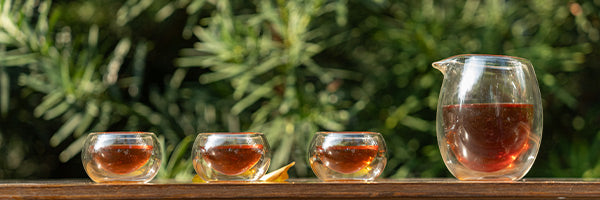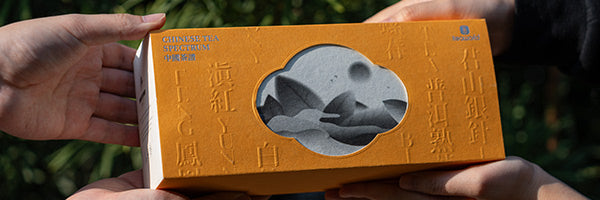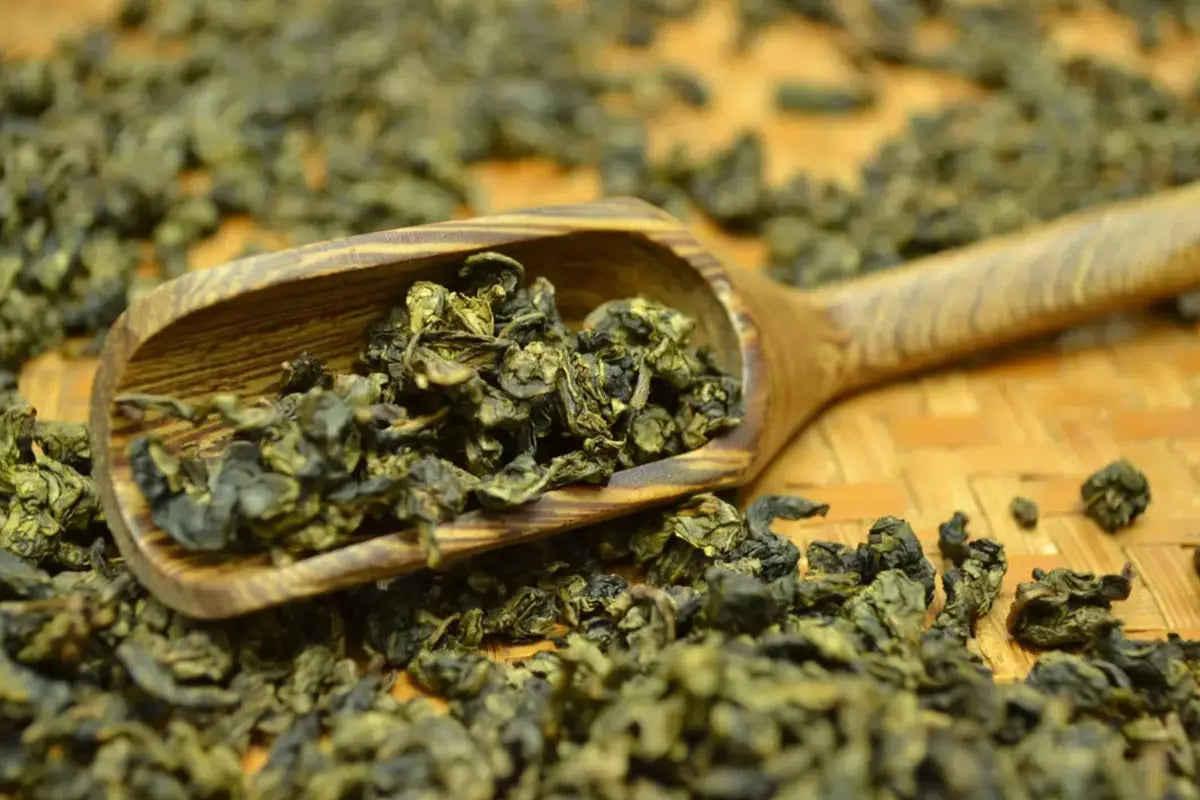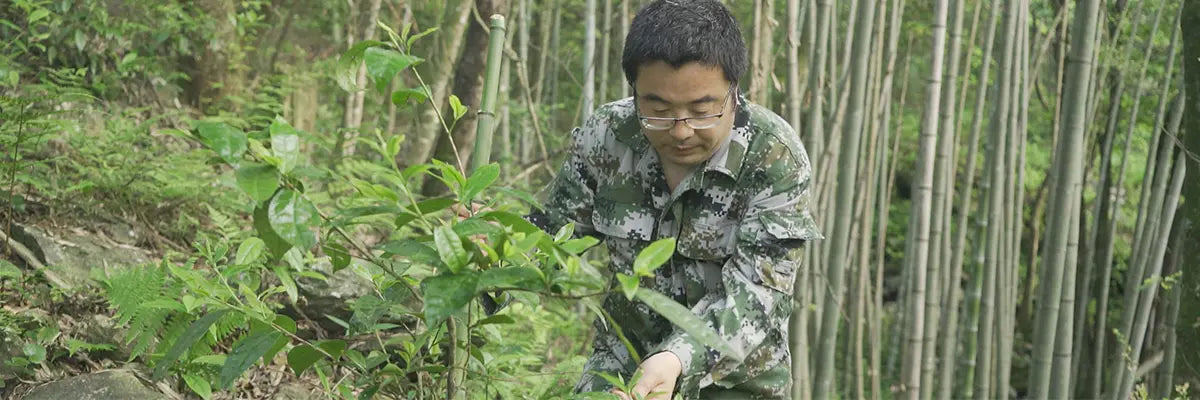Я полагаю, что те, кто знаком с китайским чаем, в какой-то степени слышали или знают о чае Те Гуаньинь. Когда люди впервые сталкиваются с Те Гуаньинь, некоторые могут ошибочно подумать, что это разновидность зеленого чая. На самом деле Те Гуаньинь — это классический чай улун. Название Те Гуаньинь изначально относилось к сорту чайного дерева, и поскольку оно подходит для приготовления чая улун, готовый продукт чая улун из листьев деревьев Те Гуаньинь также называется Те Гуаньинь. Так называемый чай Те Гуаньинь — это чай улун, изготовленный из сорта чайного дерева Те Гуаньинь.
Почему Те Гуаньинь часто путают с зеленым чаем?

Те Гуаньинь можно разделить на три основных типа: Цинсян (Свежий аромат) Те Гуаньинь, Нунсян (сильный аромат) Те Гуаньинь и Чэньсян (выдержанный аромат) Те Гуаньинь.
Qingxiang Tie Guanyin имеет относительно мягкий вкус с легкой сладостью на кончике языка, склоняясь к современным методам обработки. Его внешний вид характеризуется нефритово-зеленым цветом, прозрачным настоем, богатым ароматом и отчетливыми цветочными нотками, что приводит к мягкому и аутентичному вкусу.
С другой стороны, Nongxiang Tie Guanyin известен своим крепким вкусом, сильным и стойким ароматом и более выраженным сладким послевкусием. Он производится с использованием традиционных методов обжарки после первоначальной обработки. Nongxiang Tie Guanyin имеет золотистый оттенок ликера и чистый аромат, предлагая густой и насыщенный вкус. По сравнению с Qing Xiang, Nong Xiang Tie Guanyin более теплый по своей природе и, как полагают, обладает дополнительными преимуществами, такими как утоление жажды и поддержка пищеварения.
Чэньсян Те Гуаньинь, также известный как выдержанный или созревший чай, производится путем длительного хранения Цинсян или Нунсян Те Гуаньинь и многократной обработки. Эта категория Те Гуаньинь имеет более глубокий цвет, от красновато-коричневого до темно-красного, насыщенный настой, сладкий и мягкий вкус и стойкий аромат. Его характеристики и вкус похожи на чай пуэр, черный чай и другие чаи с богатым историческим и культурным наследием.
Qingxiang Tie Guanyin — самый распространенный тип чая на рынке, и большинство людей сталкиваются с Qingxiang Tie Guanyin. Зеленоватый настой и зеленый вид листьев после заваривания действительно могут напоминать зеленый чай , поэтому многие люди принимают Tie Guanyin за зеленый чай. Если вы столкнетесь с золотистым настоем Nongxiang Tie Guanyin или красновато-коричневым настоем Chenxiang Tie Guanyin, его вряд ли спутают с зеленым чаем.
Основные методы обработки чая Те Гуаньинь определяют его классификацию как улун.

Конечно, не следует судить о категории чая только по его внешнему виду и цвету. Причина, по которой Те Гуаньинь классифицируется как улун, заключается в процессе его приготовления.
Основные этапы приготовления Те Гуаньинь включают в себя Вэйдяо (увядание), Яоцин (встряхивание листьев), Шацин (уничтожение зелени), Жуньянь (скручивание) и сушку. Самым важным этапом в этом процессе является Яоцин, что также означает «встряхивание листьев». Этот этап включает в себя попеременное встряхивание и разбрасывание листьев, и это ключевая процедура, которая придает уникальные качества Те Гуаньинь. «Встряхивание» — это динамический процесс, при котором свежие листья сталкиваются, разбрасываются и трутся друг о друга в барабане для встряхивания. «Распределение» — это статический процесс, при котором листья раскладываются в бамбуковом сите, позволяя влаге проникать и происходить различным химическим изменениям. Встряхивание листьев облегчает транспортировку влаги от стеблей к поверхности листьев, способствуя омоложению листьев, в то время как распределение помогает рассеивать влагу с краев листьев, что приводит к увяданию и размягчению. По сути, встряхивание предназначено для омоложения, а распределение — для увядания. Встряхивание и разбрасывание обычно проводят 3-4 раза, с чередованием омоложения и увядания листьев. С увеличением частоты встряхивания влажность уменьшается, трансформация ускоряется, зелень увядает, а цветочный аромат усиливается, постепенно переходя от желто-зеленого цвета к светло-красному и даже серебристо-красному, образуя характерные «зеленые листья с красным краем».
Яоцин — это уникальная технология обработки в производстве чая улун. Этот основной процесс Те Гуаньинь классифицирует его как чай улун. Для сравнения, обработка зеленого чая в основном включает три этапа: Шацин (уничтожение зеленого), Жуньянь (скручивание) и сушка. Беглый взгляд на два процесса чая улун и зеленого чая ясно показывает, что Те Гуаньинь нельзя считать зеленым чаем.
Отличительная черта Те Гуаньинь как улуна: ярко выраженный аромат

Чай улун славится своим уникальным ароматом, особенно это касается высококачественных листовых чаев улун, обладающих множеством насыщенных ароматов, которые стоит изучить.
Основной процесс приготовления чая в улуне, яоцин (встряхивание листьев), придает улуну исключительно выраженный аромат. Во время этого процесса столкновение и перемешивание свежих листьев вызывают некоторые клеточные повреждения на краях листьев, способствуя окислению полифенольных соединений и образованию окрашенных веществ, а также стимулируя развитие ароматических соединений. Когда яоцин (встряхивание листьев) выполняется эффективно, весь процесс приводит к последовательности изменений аромата: аромат листьев, легкий цветочный аромат, цветочный аромат, легкий фруктовый аромат, фруктовый аромат и аромат спелых фруктов. Это приводит к пышным ароматическим характеристикам чая улуна.
Высококачественный чай Те Гуаньинь известен своим свежим и душистым ароматом, который наполняет комнату, когда чай заваривается. Часто говорят, что он имеет «стойкий аромат даже после семи завариваний». Исследования, проведенные как внутри страны, так и за рубежом, показали, что Те Гуаньинь из Аньси, в частности, содержит самый разнообразный спектр ароматических соединений, со значительно более высокой долей ароматических компонентов с низкой и средней температурой кипения по сравнению с чаями улун, изготовленными из других сортов чайного дерева. Этот уникальный аромат Те Гуаньинь из Аньси завораживает и делает чаепитие восхитительным. iTeaworld предлагает Цинсян Те Гуаньинь из основного региона производства чая Аньси, доступный для доставки по всему миру, что позволяет вам насладиться подлинным вкусом Те Гуаньинь.
Надеюсь, эта статья поможет развеять распространенное заблуждение о Те Гуаньинь и поможет лучше понять этот давний и ароматный улун.











































































